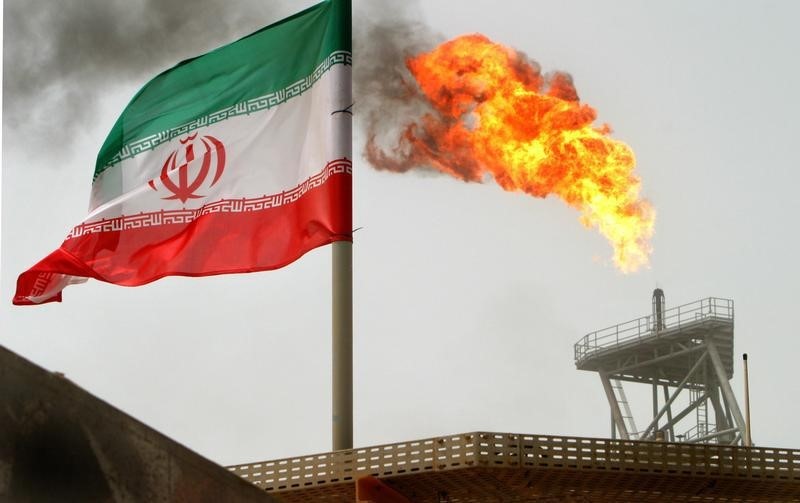TSX futures inch lower after index closes at new all-time high
By Barani Krishnan
Investing.com -- Fear that Iran might win back its stalled nuclear deal from global powers to pave its re-entry into the export market for oil sent crude prices near six-month lows on Monday, prompting OPEC supremo Saudi Arabia to issue a thinly-veiled threat that it will slash the group’s production if the market kept tanking.
“The paper and physical markets [for oil] are increasingly disconnected,” Saudi Energy Minister Abdulaziz bin Salman said shortly after the benchmark for U.S. crude came less than a dollar from revisiting Tuesday’s low of under $86 per barrel.
The drop came amid renewed momentum for reports from last week suggesting that Iran and the European Union were close to reviving a 2015 nuclear deal for Tehran that would lift White House sanctions on the Islamic Republic’s oil.
Abdulaziz’s hatred of the short-sellers in crude oil futures is well known. Despite his lament of the disconnect between the physical and paper markets in oil, crude futures were trading at a significant premium to the physical, trade data showed.
According to data provided by Plains Marketing LP, a barrel of U.S. West Texas Intermediate crude for prompt delivery was at $87.25 as of Friday. That was at least $3.50 above the $90.77 settlement for October WTI on the New York Mercantile Exchange.
By 12:30 ET, WTI was down 88 cents, or almost 1%, to $89.56 a barrel. It fell to as low as $86.30 earlier in the day. WTI is down almost 10% since the start of August, extending the back-to-back loss of more than 7% in July and June.
Brent, the London-traded global benchmark for crude, was down 92 cents, or also about 1%, to $95.80. Brent’s session low was $92.37. Brent is down more than 12% since the start of August, after a 6.5% drop in July and a slide of more than 4% in June.
Crude prices had their last monthly gain in May. Their biggest rally for the year was in March, when WTI reached $130.50 while Brent almost touched $140 in the aftermath of Moscow’s breach of Ukraine that drew severe Western sanctions on Russian energy exports that upended global commodity markets.
A series of headlines on Monday laid out the Saudi energy minister’s ire over the selloff in oil which had taken some 35% off crude prices from their Ukraine invasion highs.
According to Abdulaziz:
* OPEC+ may need to tighten output in order to stabilize the market.
* Saudi Energy Minister Abdulaziz: Disconnect in oil futures may prompt OPEC+ action.
* OPEC+ will soon begin work on a new post-2022 agreement.
* The detrimental volatility of oil reinforces OPEC+ resolve.
* The oil market is ignoring limited spare capacity.
With 13 original members led by Saudi Arabia — before its alliance with Russia and nine other oil producers — the extended OPEC+ group has been raising production over the past year since slashing them from May 2020 in the aftermath of the coronavirus breakout that decimated demand for oil.
While this year’s production hikes were initially insulated by the Ukraine-invasion highs, OPEC+ has become more vulnerable since the market downturn that began in May.
The specter of the Iran nuclear deal being revived is OPEC+’s latest problem.
According to the Al Jazeera news outlet, the proposal being considered by the U.S. stipulates that “on the day after the agreement is signed, sanctions on 17 Iranian banks as well as 150 economic institutions will be lifted.”
Instant sanctions removal is something Iran has been demanding for, since the start of its negotiations with the Biden administration 20 months ago. The White House’s response had previously been that the Islamic Republic roll back the uranium enrichment it had carried out and prove that it wasn’t building a nuclear bomb.
With the U.S. having “approved” the EU’s so-called final text proposal for the re-establishment of the 2015 nuclear accord between Iran and six world powers, the deal will be carried out in four phases over two 60-day periods, sources with knowledge of the matter told Al Jazeera.
The network said the sanctions release for Iran includes the release of billions of dollars in frozen Iranian funds and oil exports in return for the scaling back of its nuclear program. This is another major development where Iran is concerned.
Some 12 million to 14 million barrels of Iranian crude is estimated to be held as “bonded storage” in Chinese ports, awaiting the U.S. go-ahead for them to be put to commercial use. About $7 billion worth of Iranian funds, stuck in South Korean banks under the sanctions imposed by Washington, could be freed as well.
More importantly, aside from Al Jazeera, CNN reported that Iran has dropped its demand that the United States stop listing the Iranian Revolutionary Guard Corps as a terrorist organization under the State Department’s watchlist. That demand, like the instant sanctions removal, has been one of Iran’s sticking points that have held up the reinstatement of the 2015 nuclear deal.
A Biden administration official, who spoke to CNN, said: "The current version of the text, and what they are demanding, drops it. So if we are closer to a deal, that's why.”
Even so, the White House seemed to be back-pedaling on Monday on chances of the nuclear deal seeing a new phase, apparently to appease growing Israeli discontent over the matter.
Israel, dismayed by the increasing possibility that its arch-rival Iran will reap billions of dollars in cash and oil from the deal to pose new terror threats to Jerusalem, is pressuring the United States not to okay the agreement.
“The White House and the State Department are still reviewing and studying the Iranian response to the EU draft agreement,” news portal Axios said. “It is not clear when the U.S. will give its response in private and in public.”
